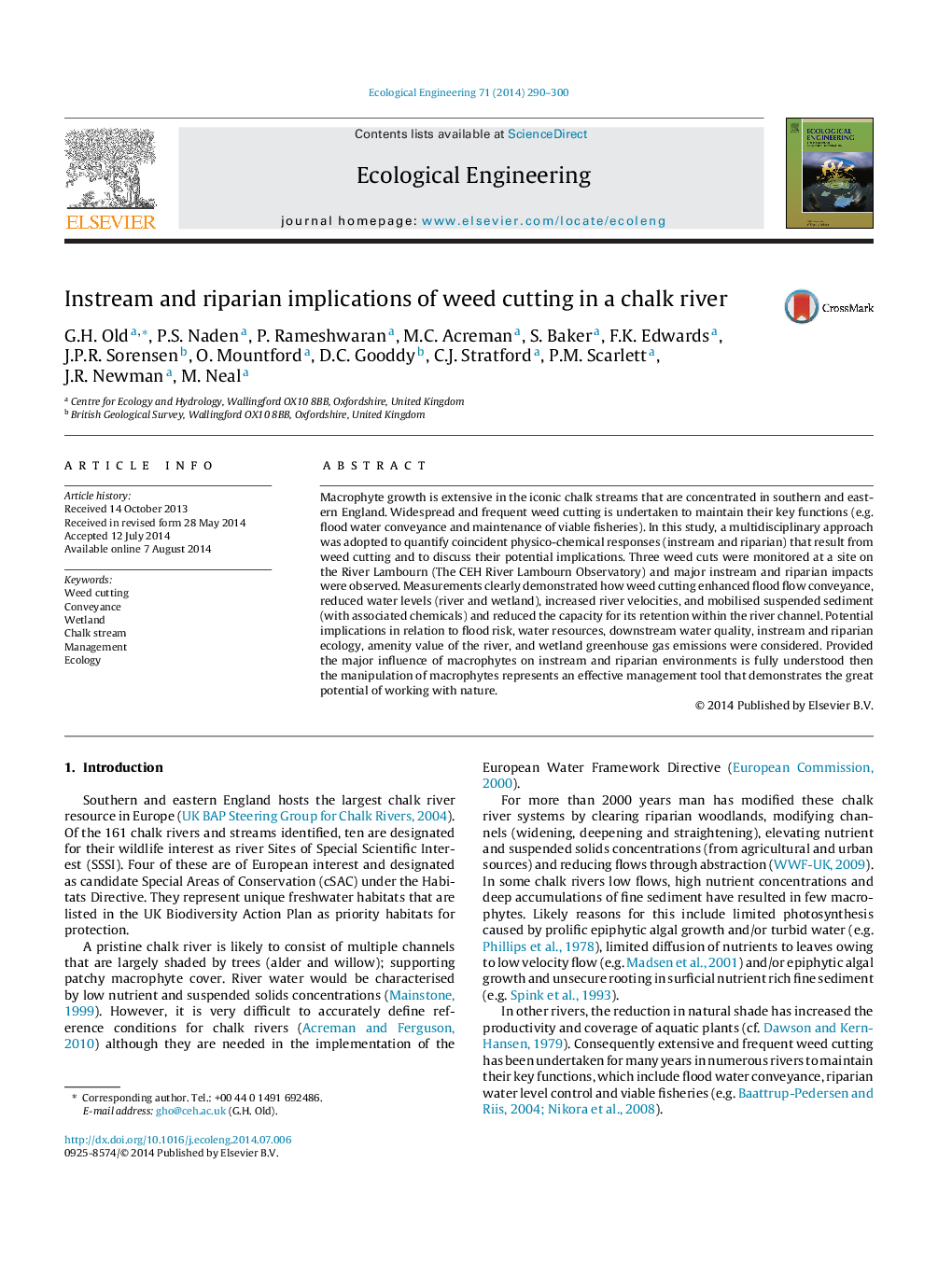| Article ID | Journal | Published Year | Pages | File Type |
|---|---|---|---|---|
| 4389164 | Ecological Engineering | 2014 | 11 Pages |
•Weed cutting increased flood conveyance by reducing levels and increasing velocities.•Instream and riparian ecology is likely to be impacted by weed cutting.•Weed cutting affected riparian groundwater levels.•Weed cutting mobilised instream fine sediment and associated chemicals.•Manipulation of macrophytes represents an effective management tool.
Macrophyte growth is extensive in the iconic chalk streams that are concentrated in southern and eastern England. Widespread and frequent weed cutting is undertaken to maintain their key functions (e.g. flood water conveyance and maintenance of viable fisheries). In this study, a multidisciplinary approach was adopted to quantify coincident physico-chemical responses (instream and riparian) that result from weed cutting and to discuss their potential implications. Three weed cuts were monitored at a site on the River Lambourn (The CEH River Lambourn Observatory) and major instream and riparian impacts were observed. Measurements clearly demonstrated how weed cutting enhanced flood flow conveyance, reduced water levels (river and wetland), increased river velocities, and mobilised suspended sediment (with associated chemicals) and reduced the capacity for its retention within the river channel. Potential implications in relation to flood risk, water resources, downstream water quality, instream and riparian ecology, amenity value of the river, and wetland greenhouse gas emissions were considered. Provided the major influence of macrophytes on instream and riparian environments is fully understood then the manipulation of macrophytes represents an effective management tool that demonstrates the great potential of working with nature.
